Berkeley Innovation Design Challenge
I applied to Berkeley Innovation ↗ (BI) in Fall 2020 during my freshman year of college. BI requires those applying to complete a design prompt and submit a 10-slide pitch deck. The design prompt for Fall 2020 was "how might we redesign remote experiences" which was created in light of the COVID-19 pandemic. My approach to the design prompt tackled improving online shopping experiences and limiting clothing returns.
I have now been in Berkeley Innovation since Fall 2020, Having consulted for 3 years, being a project mentor for Notability, the Diversity, Equity, and Inclusion Officer during Fall 2022, now being an advisor helping the club with DEI efforts and recruitment.
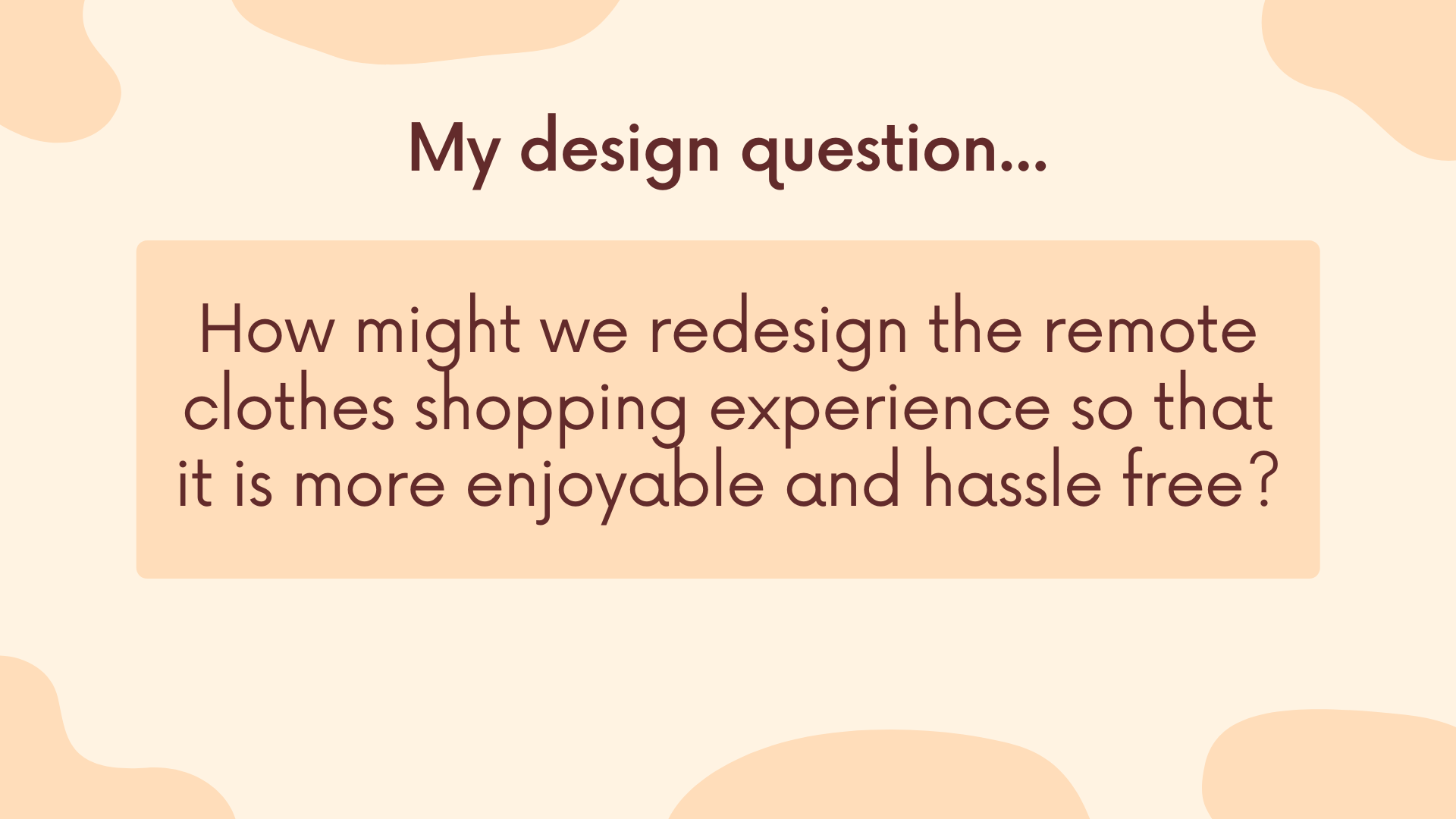
During the COVID-19 Pandemic, shipping clothing to my house was a problem. I found that it felt like a hassle as I could not try them on in person, requiring me to feel the need to buy multiple of the same clothes in different sizes. I decided for this design challenge, I would see how others felt about online clothing shopping.

For the design process I followed a similar five phase process from interaction-design.org ↗. I adapted these stages to work withing a week and a half in total, spending more time on user research.
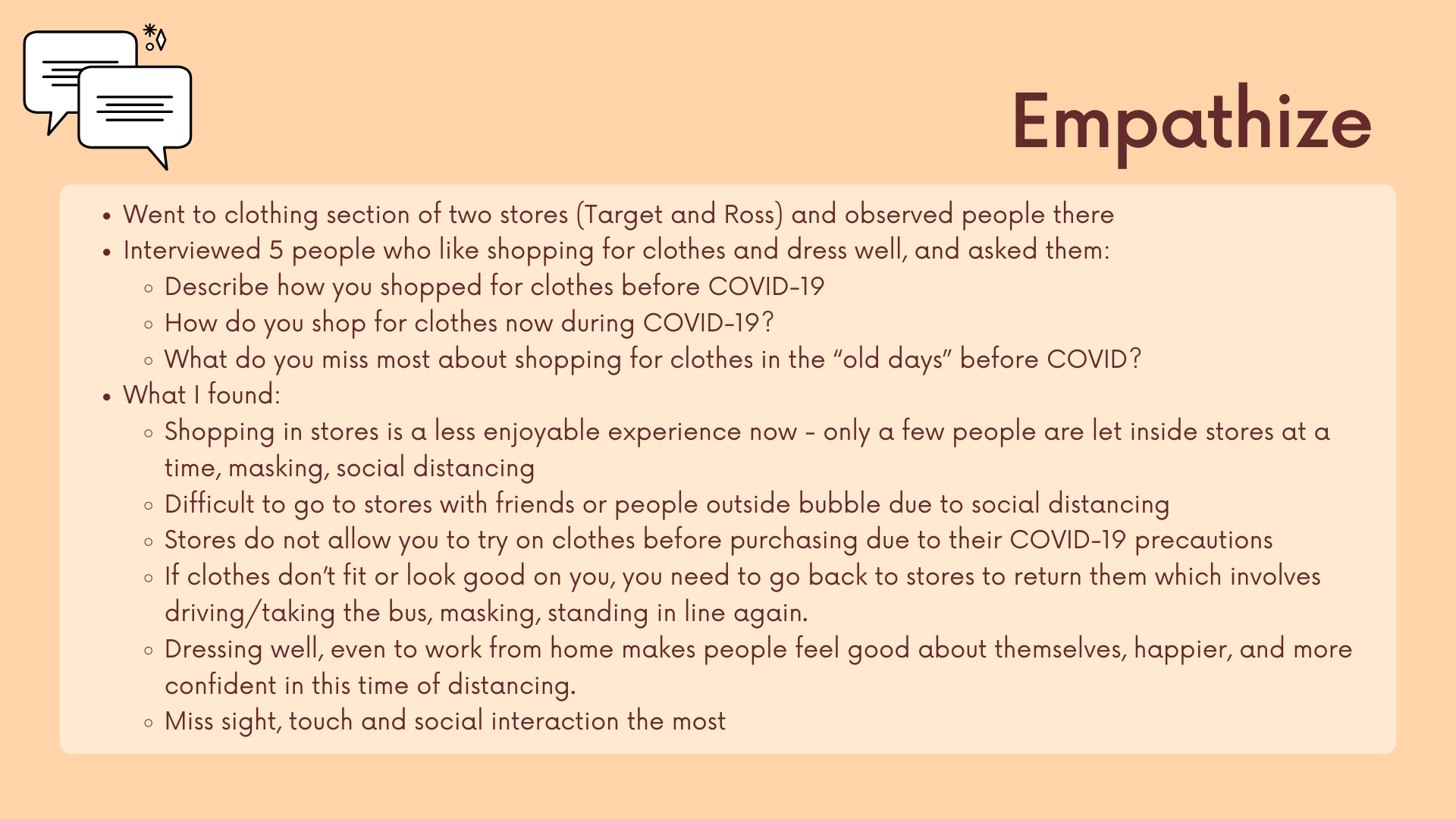
I did two methods of user research, Ethnography/Observation and Interviews. I observed how people shopped during the pandemic at Target and Ross as well as Interviewed five people who I knew liked shopping and fashion.
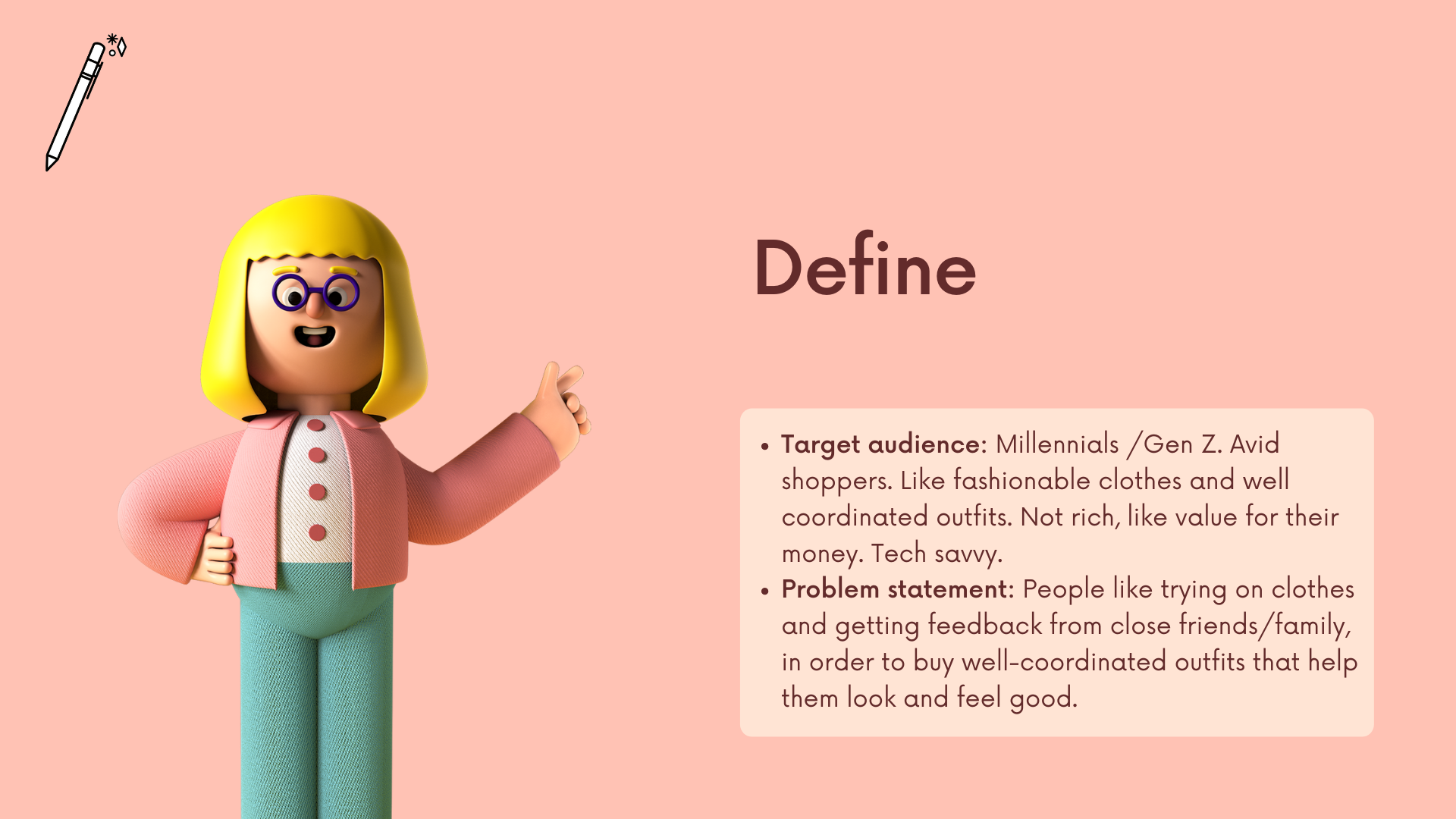
Based on my user research I decided to continue with my original “How Might We” and focus on Millennial to Gen Z shoppers and learn how I can help shoppers find ways to try on clothes in a COVID/Pandemic environment.
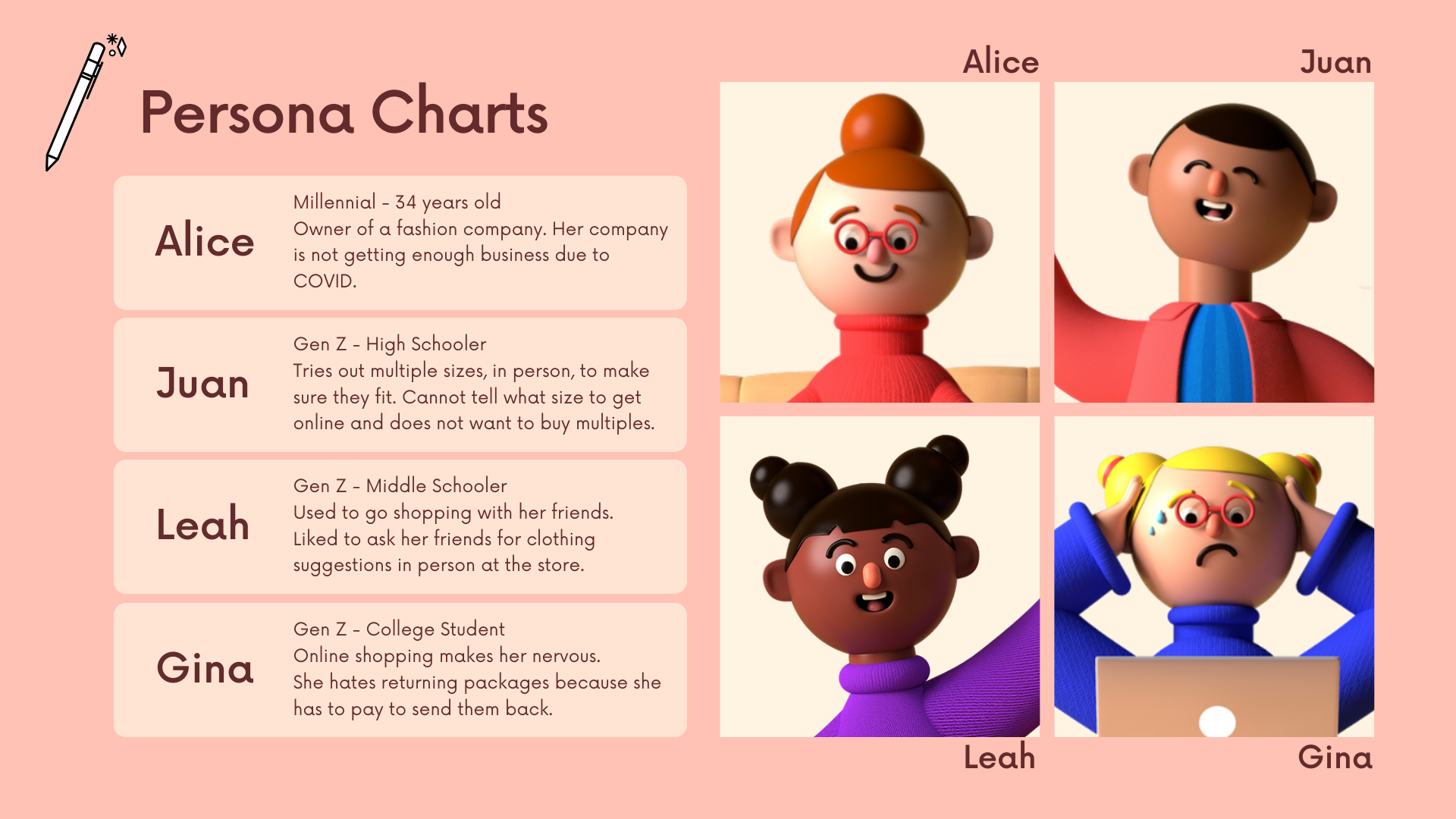
I created persona charts based on observation and interview research. I chose to focus on one Millennial and three Gen Z personas of different ages, being Middle School, High School, and College.

I created a list of several ideas I had in mind, thinking of pros and cons and how they may address the users’ needs.

I decided to protoype for a website that would allow users to see the product on various other models of different sizes and allow them to create an avatar that can match their body type of height. First I created a low-fidelity prototpye sketch...
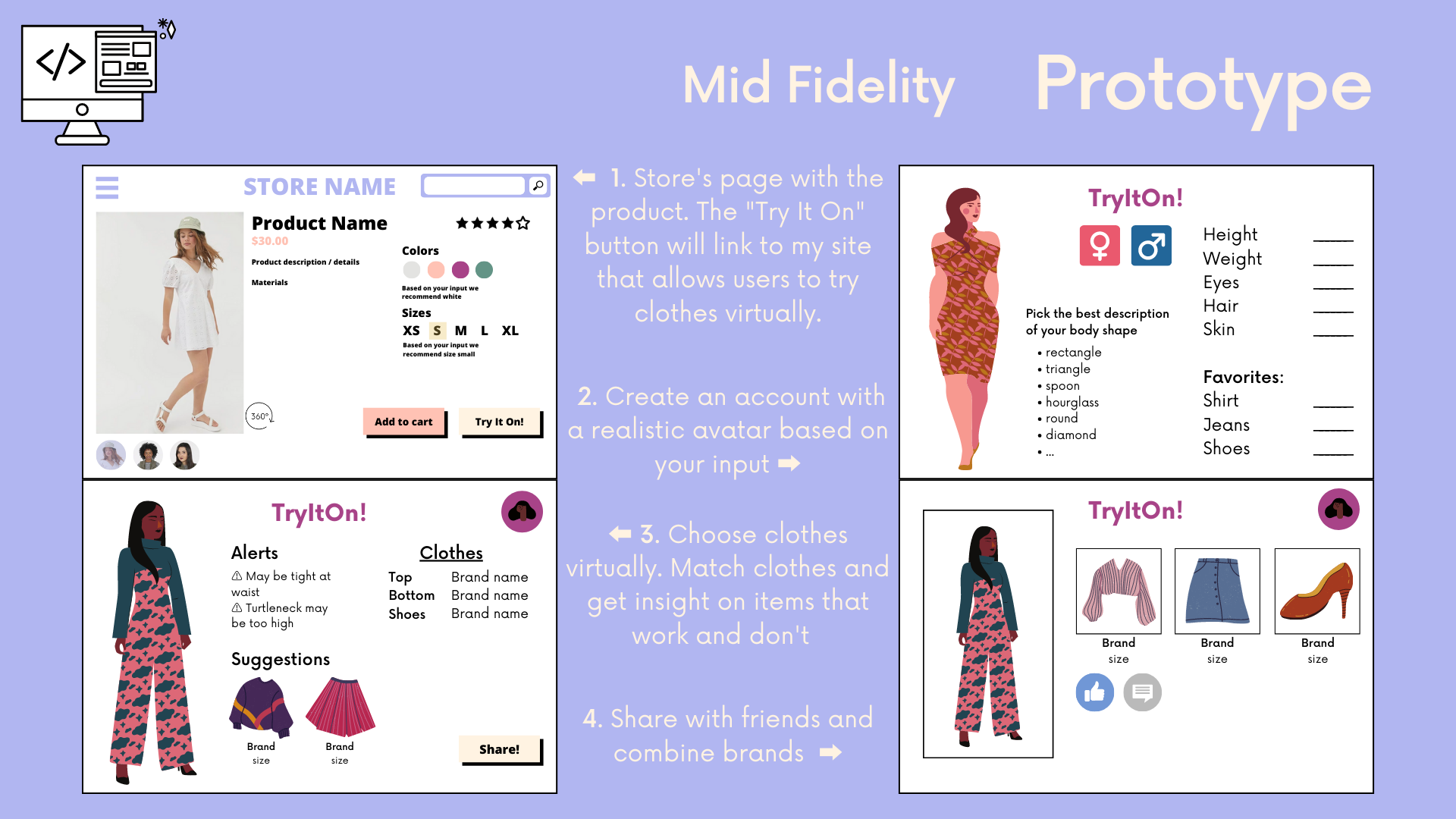
... then created a mid-fidelity prototype. Since this was a design challenge that only allowed me to do the human-centered design process for less than two weeks, I was not able to create a higher fidelity prototype and it was not neccessary of me to do so.
However I would love to revist this project and potentially do so and learn more about how to adapt body inclusivity into this project.
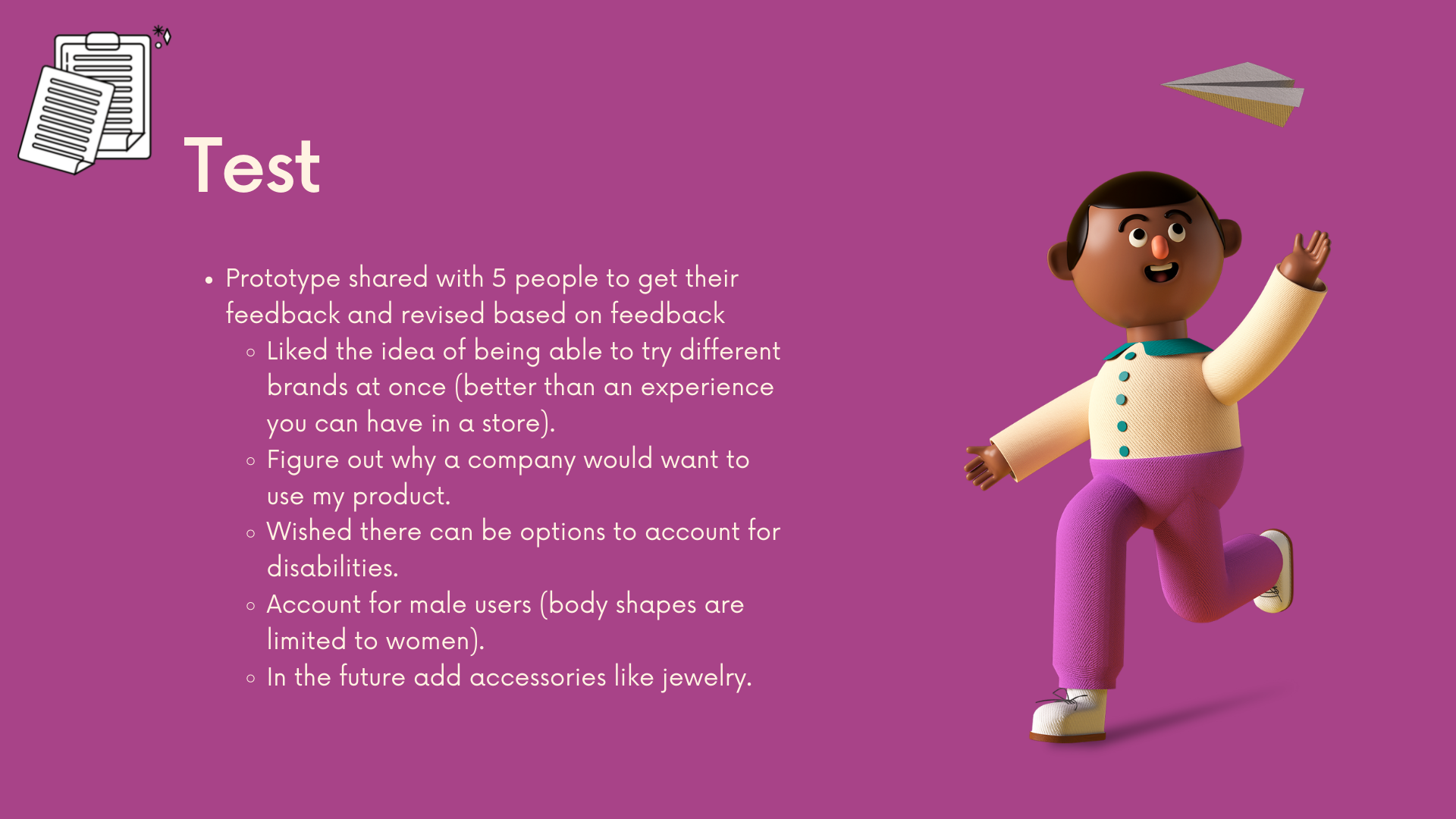
I asked the five people I had interviewed back to test out my prototypes and get feedback. It brought up some ideas in mind, such as how to intergrate this product with other company websites such as Old Navy or Nike, or how other products such as jewelry, bags or shoes might come into play.
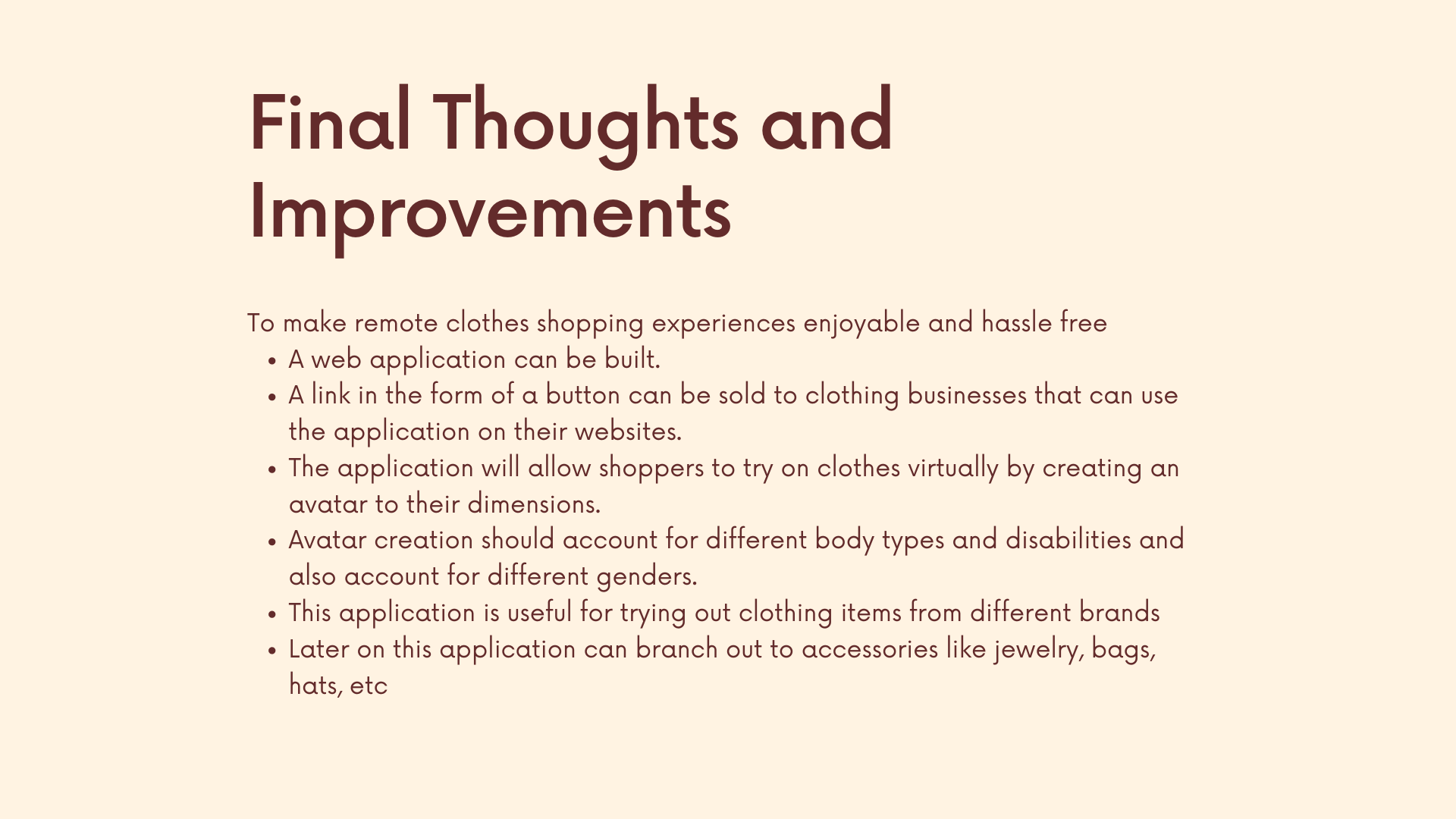
These were some of my final thoughts and imporvements. Hopfully one day I can “re-do” this project as it was my first introduction to Human-Centered Design and I have now learned so many new skills and processes from being a member of Berkeley Innovation.